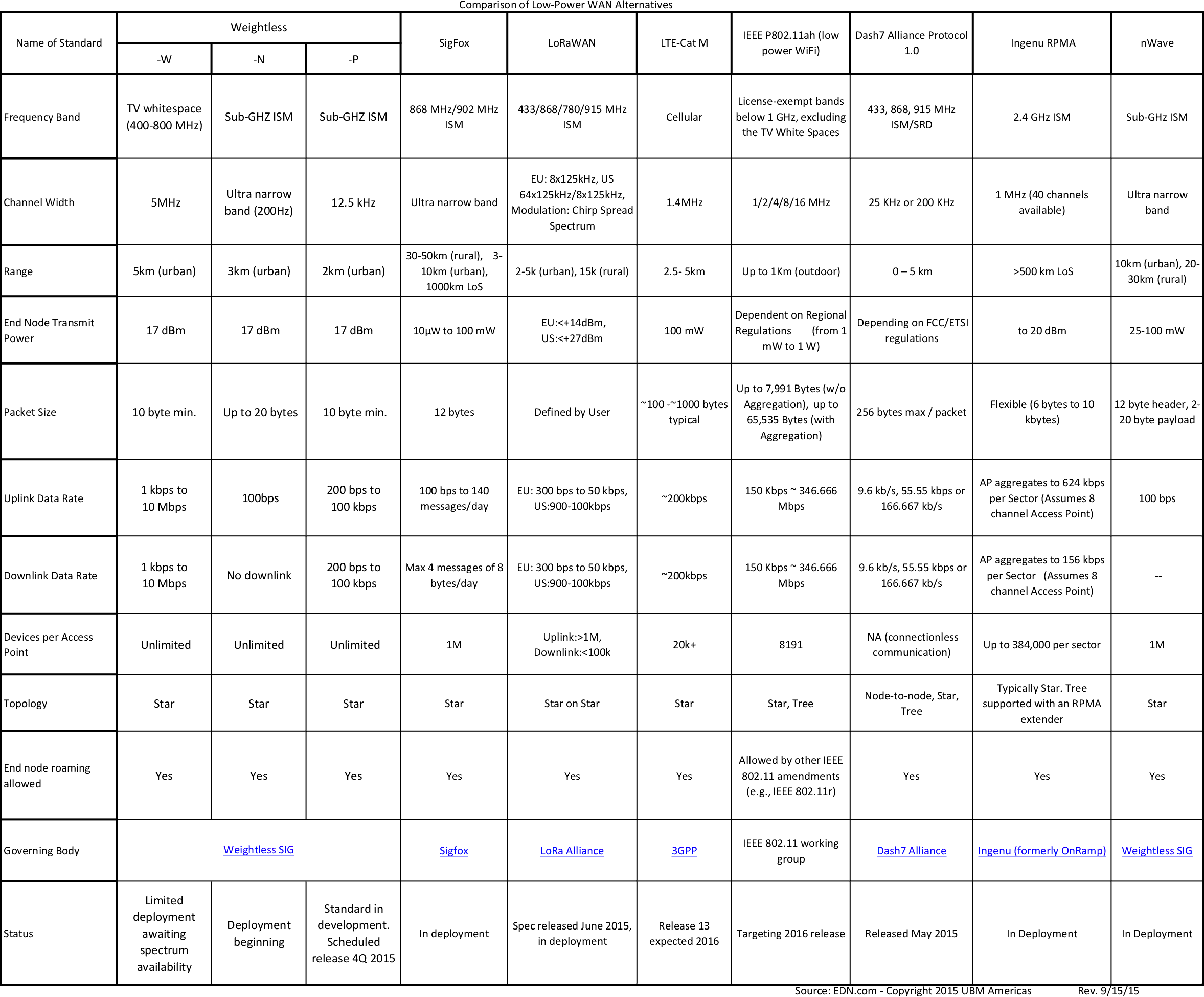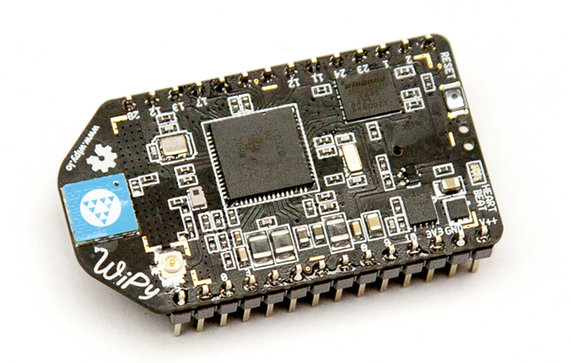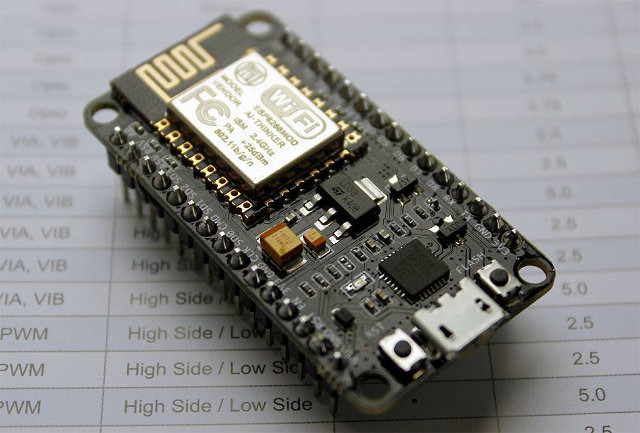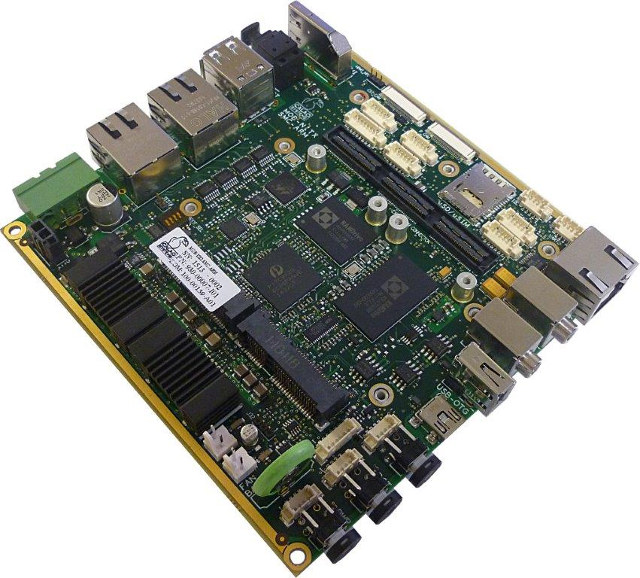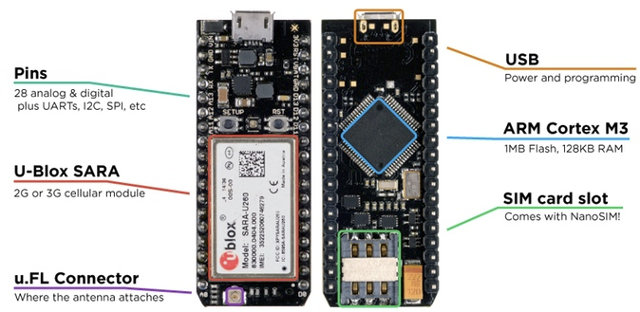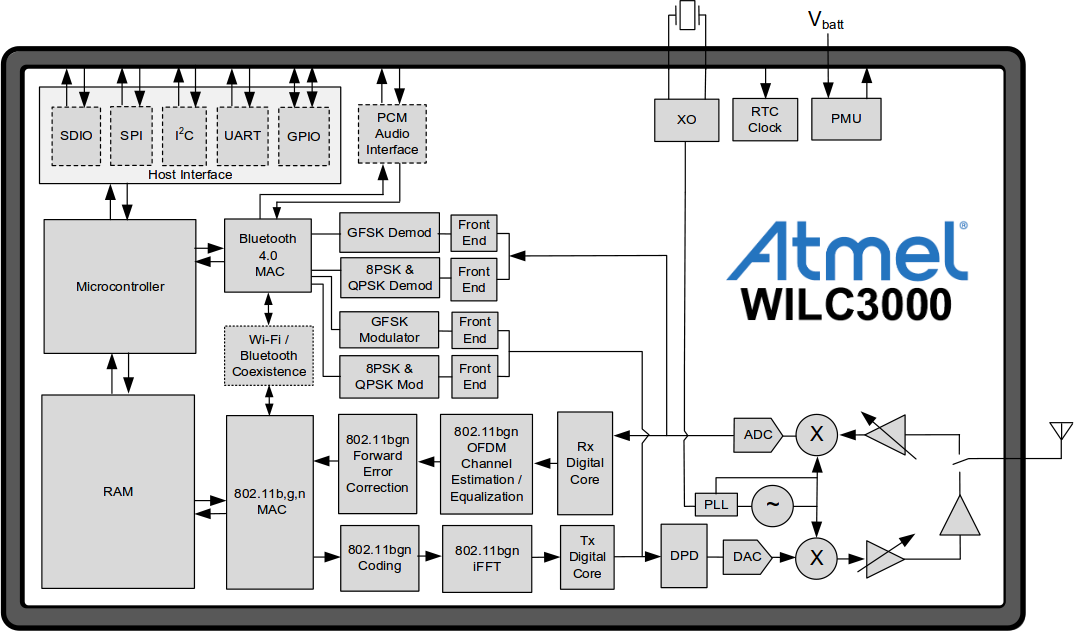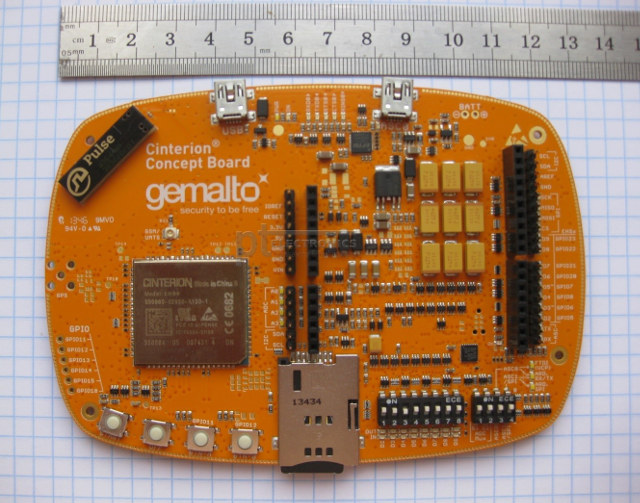WiFi, Bluetooth and Zigbee are commonly found in consumer devices part of the “IoT ecosystem”, but the range, cost, power consumption, and/or scalability of these wireless standards are not suitable. For example, agricultural and forestry applications normally require long distance, and smart parking or city lighting may requires scalability to a great number of nodes, so alternatives are needed. EDN wrote a thorough article comparing 10 alternative wireless standards: Weightless-W, Weightless-N, Weightless-P, SigFox, LoRaWAN, LTE-Cat M, IEEE P802.11ah, Dash7, Ingenu RPMA, and nWave. The table includes the frequency band, channel width, range, transmit power, packet size (minimal or maximal), downlink and uplink data rates, maximum number of connected devices, topology, roaming capability, and status. If you had to implement something today, four to five solutions are “in deployment”: SigFox, Ingenu RPMA, nWave, LoRa, and possibly Dash7, while the other are only starting to get deployed, or will be finalized in […]
Weightless-P Standard is Designed for High Performance, Low Power, 2-Way Communication for IoT
Weightless was unveiled over two years ago, as a new standards for IoT leveraging “white space” spectrum, previously used by analog TV broadcasts, for free M2M / IoT communication using low power (10 years battery life) and cost-efficient hardware ($2 hardware) offering a range of 5 to 10 km. Development kits and base stations were scheduled for Q2 2014, but there’s either been some delays or they are only available to Weightless members, as you need to register to get notified once hardware becomes available. The Weightless SIG (Special Interest Group) has not stopped working on the standard as there are now three Weightless standards: Weightless-W (using White band spectrum), Weightless-N (sub-GHz spectrum), and and newly announced Weightless-P offering similar features as 3GPP carrier grade solutions, but at lower costs and lower power consumption. The key features of Weightless-P are shown below: Excellent capacity and scalability for IoT deployment FDMA+TDMA […]
WiPy Wi-Fi Board for IoT Runs MicroPython on Texas Instruments CC3200 (Crowdfunding)
If you’ve interested in connecting devices via Wi-Fi, you’re being spoiled as “Internet of things” boards keeps getting designed and produced. The latest board with WiPy, a small board powered by Texas Instruments CC3200, running MicroPython, and consuming less than 1mA in suspended mode with Wi-Fi connected. WiPy specifications: MCU – TI CC3200 ARM Cortex-M4 @ 80 MHz with 256KB RAM, Wi-Fi and TCP/IP stack Storage – 2MB flash Connectivity – WiFi 802.11b/g/n 16Mbps (AP, Station and WiFi-Direct), on-board antenna and u.FL connector Expansion – 2x 14-pin headers (2.54mm pitch) with Up to 25 GPIOs 2x UART, SPI, I2C, I2S, and SD card 3×12 bit ADCs Others 4×16 bit timers with PWM and input capture RTC Hash and encryption engines: SHA, MD5, DES, AES Reset switch, heartbeat LED Power Supply – 3.6 – 5.5V DC input; 3.3V output up to 250mA Power Consumption – Active: 14 mA; Suspended (Wi-Fi connected): […]
NodeMCU is both a Breadboard-Friendly ESP8266 Wi-Fi Board and a LUA based Firmware
NodeMCU is a LUA based interactive firmware for Expressif ESP8622 Wi-Fi SoC, as well as an open source hardware board that contrary to the $3 ESP8266 Wi-Fi modules includes a CP2102 TTL to USB chip for programming and debugging, is breadboard-friendly, and can simply be powered via its micro USB port. Let’s checkout the hardware first. The latest version of the board (V1.0) has the following specifications and features: Wi-Fi Module – ESP-12E module similar to ESP-12 module but with 6 extra GPIOs. USB – micro USB port for power, programming and debugging Headers – 2x 2.54mm 15-pin header with access to GPIOs, SPI, UART, ADC, and power pins Misc – Reset and Flash buttons Power – 5V via micro USB port Dimensions – 49 x 24.5 x 13mm The hardware documentation for the board can be found on nodemcu-devkit repo, including schematics and PCB layout designed with Altium Designer, […]
Baseball Nano-ITX i.MX6 Board Targets Secure Industrial M2M and IoT Products
Calao Systems has introduced a new Freescale i.MX6 single board computer with Baseball embedded platform, targetting network-connected industrial M2M and Internet of Things (IoT) applications requiring a high-level of security achieved with an FIPS 140-2 trusted platform module, and Crypto Authentication chip. The board is comprised of a Nano-ITX based board and a Freescale.iMX6 (Solo, Dual or Quad) SMARC 1.1 module with the following combined specifications: SoC – Freescale iMX6 Solo, Dual or Quad Cortex A9 processor @ up to 1GHz with Vivante GPU System Memory – 2 GB DDR3L, Storage On Module: 8 GB e-MMC, 8 MB SPI Flash, 1x EEPROM with unique S/N and MAC address On Baseboard: 1x Micro-SD socket, 1x Industrial Grade eMMC NANDrive (optional), 1x Industrial Grade SATA Nandrive (optional), Video Output – HDMI Audio Output – HDMI and optical S/PDIF Connectivity – 2x Gigabit Ethernet, 1x SIM card slot USB – 3x USB 2.0 […]
Spark Electron Cellular Module for M2M Projects Comes with a $3 Monthly Data Plan (Crowdfunding)
Spark IO started with Spark Core, a tiny Wi-Fi module, followed with Spark Photon is a cheaper, faster, and tinier Wi-Fi module, and now the company is launching Spark Electron to bring cellular connectivity to hobbyist projects at an affordable cost and small form factor. Spark Electron specifications: MCU – ST Micro STM32F205 ARM Cortex M3 microcontroller @ 120 MHz with 1MB Flash, 128K RAM Cellular Connectivity – U-Blox SARA U-series (3G) or G-series (2G) modem + NanoSIM card slot + u.FL connector for Antenna Headers – 36 pins with 28 GPIOs (D0-D13, A0-A13), plus TX/RX, 2 GNDs, VIN, VBAT, WKP, 3V3, RST USB – micro USB port for power and programming Misc – Setup and reset buttons, LED Dimensions – 5.08 cm x 2.03 cm x 0.76 cm (1.27 cm including headers) The board can be programmed with Wiring (Arduino’s programming language), C/C++, or ARM assembly. It’s longer than Spark […]
Atmel Introduces Wi-Fi / Bluetooth Combo SoCs for the Internet of Things
Atmel has recently announced two SoCs supporting Wi-Fi and Bluetooth 4.0 that target M2M and IoT applications, namely WILC3000 wireless link controller and WINC3400 network controller which both integrate a power amplifier, LNA, switch and power management unit. WILC3000 and WINC3400 should share the following specifications: MCU – Cortus APS3 32-bit processor ROM/Flash – 256KB instruction/boot ROM (160KB for 802.11 and 96KB for Bluetooth) along with a 768 bits of non-volatile eFuse memory RAM – 420KB instruction RAM (128KB for 802.11 and 292KB for Bluetooth), and a 128KB data RAM (64KB for 802.11 and 64KB for Bluetooth), as well as 160KB shared/exchange RAM (128KB for 802.11 and 32 KB for Bluetooth) Wi-Fi IEEE 802.11 b/g/n RF/PHY/MAC SOC (2.4 GHz) IEEE 802.11 b/g/n (1×1) for up to 72 Mbps Wi-Fi Direct and Soft-AP support Supports IEEE 802.11 WEP, WPA, WPA2 Security, China WAPI security Bluetooth Version 4.0 Low Energy Class 1 […]
Gemalto Cinterion Concept Board Features 3G Connectivity, Arduino Headers for Secure Java M2M Applications
Gemalto is a digital security company providing software solutions, smart cards, and secure modules, and one the largest manufacturer of SIM cards. The company has launched a developer board earlier this year called Cinterion Concept Board with the company’s Cinterion EHS6 M2M Java embedded machine-to-machine (M2M) 3G module, and Arduino compatible headers. Cinterion Concept Board specifications: 2G/3G M2M Module – Gemalto Cinterion ESH6 with Java ME embedded support Cellular Connectivity GPRS/EDGE Class 12, HSPA, 5 bands 3G, 4 bands 2G. Voice support. On-board antenna (top left side on picture) SIM card holder Expansion Arduino Compatible headers 8 GPIO with level shifters, and corresponding LEDs USB – 1x mini USB port for power, 1x mini USB port for debugging and power Misc – Start on/off, and user buttons, LEDs for serial interface. Power – 5V via either mini USB ports, solder pads for external battery. Dimensions – N/A The board is […]


